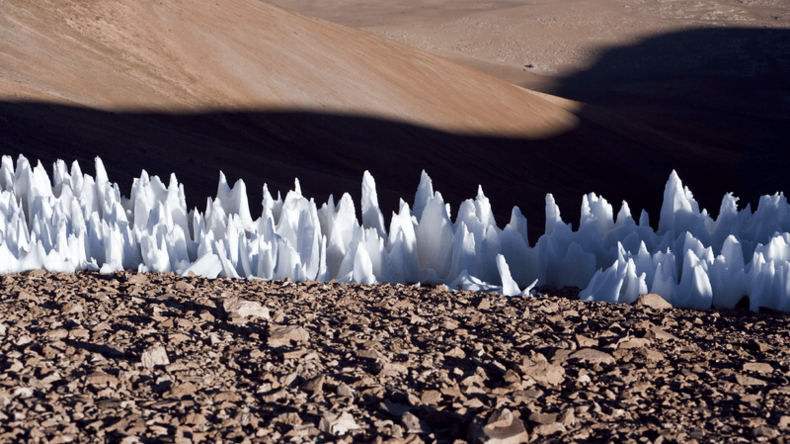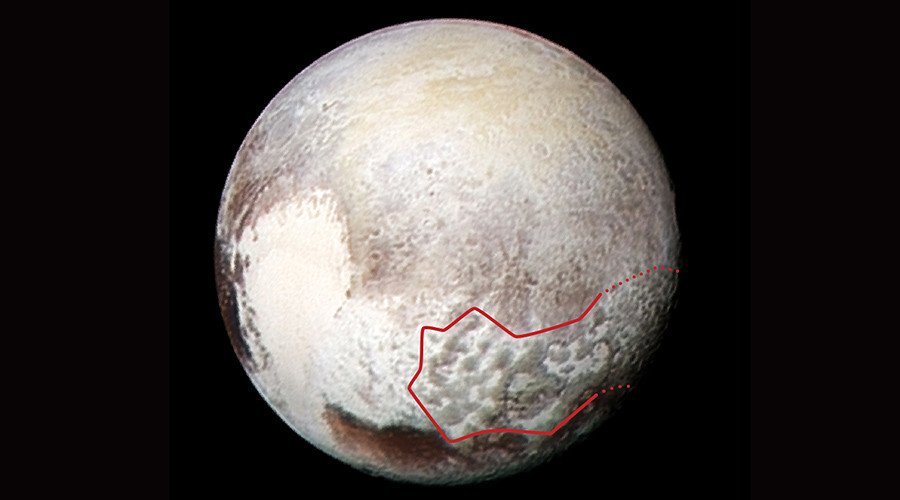Weird ‘ice blades’ on Pluto finally cracked by NASA (PHOTOS)

Perplexing sword-like columns of space ice that rise up through Pluto’s Tartarus Dorsa mountains may finally have been explained by NASA – two years after the weird formations were first observed in detail.
The ‘ice blades’ are the result of solid methane ‘evaporation,’ an erosion process similar to that witnessed in the peaks of Chile.
A dwarf planet located far from our sun, Pluto is so cold that the air on Earth would immediately freeze. It is predominantly comprised of frozen gases, such as methane, nitrogen and carbon monoxide.
Pluto’s ‘giant blades of ice’ have puzzled scientists ever since NASA’s New Horizon’s spacecraft first approached the dwarf planet in 2015 for more intimate data and imagery.

Thought to stretch as high as buildings such as New York’s Empire State skyscraper, the giant ice formations are located close to Pluto’s equator.
But the existence of the curiously-shaped ice blades suggests Pluto experiences temperature increases that would cause ice to go through ‘sublimation,’ a process by which ice skips the liquid stage of evaporation and disappears from a solid to a gas.
Origins of giant knife blades of ice found on Pluto by @NASANewHorizons is now believed to be eroded methane ice: https://t.co/GfN1L9WKPBpic.twitter.com/JsTIP2Ss3Z
— NASA (@NASA) September 26, 2017
“When we realized that [the] bladed terrain consists of tall deposits of methane ice, we asked ourselves why it forms all of these ridges, as opposed to just being big blobs of ice on the ground,” said Jeffrey Moore, of NASA’s New Horizons team.
“It turns out that Pluto undergoes climate variation and sometimes, when Pluto is a little warmer, the methane ice begins to basically ‘evaporate’ away.”
READ MORE: ‘Farewell to Pluto’: NASA releases stunning high-res image of dwarf planet (PHOTO)
It’s a similar question to the one which troubled famed biologist Charles Darwin in the 1800s, when he came across towers of ice at high-altitude along Chile’s Chajnantor plain.
Known as ‘penitentes,’ the thin ice blades are created on Earth when the sun’s rays unevenly turn snow drifts into water vapor.













